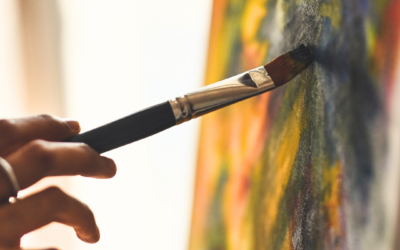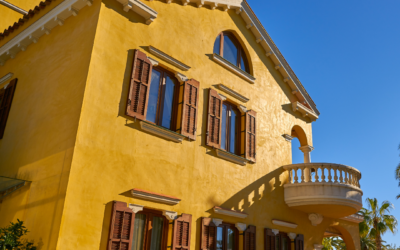This festivity is celebrated around Barcelona, Costa Dorada and Costa Brava, among others, and there are different activities and processions that are worth attending. If you want to know the most popular ones in Barcelona, Tarragona, Badalona and Reus, Shuttle2Sun offers you private transfers and shared transfers from the airport to the hotel or apartment on your chosen destination to enjoy Easter efficiently and economically.
Easter is one of the most important festivals for the Christian community all over the world, and Catalonia is no exception. It is a time of celebration and reflection, commemorating the passion, death and resurrection of Jesus. In this article, we will explore the most widespread customs in Catalonia.
Easter Processions
Throughout the week, various religious events are celebrated in the churches of Catalonia, filling them with colour and emotion with the numerous processions that take place throughout the territory. These processions are a testimony to religious faith, as well as a reflection of the culture and heritage of the region.
Easter Week in Catalonia begins on Palm Sunday, which marks the triumphal entry of Jesus into Jerusalem. In many towns and villages in Catalonia, a procession is held in which the faithful carry olive branches and palms, symbolising Jesus’ entry into the city. The procession culminates in a mass in which the Passion according to Saint Matthew is read.
In Badalona, in the municipality of Barcelona, one of the most faithful and traditional processions takes place, the procession of silence on Maundy Thursday. Before the procession begins, the mysteries are exhibited in front of the church, where beautiful sculptures from the 16th and 17th centuries can be seen in detail. Afterwards, these sculptures are guarded by Roman soldiers, known as Estaferms, and then the spectacular chanting of the Passion is performed. The procession begins with silence as the main protagonist while the Estaferms strike their spears hard against the ground. It is worth noting that this whole scenario is perfectly set in baroque style in the Dalt de la Vila neighbourhood.

Easter Week is also very much alive in Reus, located in the province of Tarragona, a city easily accessible by bus or private transfer, being less than 5km from Reus Airport. With a tradition dating back more than 400 years, it is one of the most important religious celebrations in Catalonia. You can experience one of the best-known processions just 15 minutes from Reus Airport. This is the Good Friday procession, popularly known as the “Procession of the Holy Burial“, with around 4,000 people taking part, including members of the brotherhood, penitents, musicians and local authorities. This procession begins at the parish church of Sant Francesc and goes through the streets of the historic centre of the town for several hours.
The town of Vic, located 1 hour and 20 minutes from Barcelona, stands out for the historical and cultural richness of its processions. One of the most popular is the Easter Sunday procession, held on Easter Sunday with the participation of different brotherhoods and different theatrical performances recalling the resurrection of Jesus. Also noteworthy is the theatrical performance La Dansa de la Mort (The Dance of Death), which is held on Maundy Thursday and consists of a procession in which death is danced and represented in different scenes.
If you are planning to visit the Costa Brava, you can attend the procession of the Wailing Christ in Girona; a city very well connected thanks to its airport, Girona airport, less than 13km away. The procession of the Wailing Christ is held on Maundy Thursday and goes through the historic centre of the city. It is a very moving procession in which the “Stabat Mater” is sung, a hymn that recalls the pain of the Virgin Mary at the sight of her crucified son. Nor should you miss the popular Santo Entierro (Holy Burial), which is held on Good Friday. At Shuttle2Sun we also wrote an article on what to see in Girona so that you can make a complete visit to the city.
We cannot fail to recommend the celebration of Holy Week Barcelona. The most popular processions are the Procession of the Borriquita, the Procession of the Silence, the Procession of the Holy Burial and the Procession of the Encounter. The latter represents the meeting of Jesus with his mother, the Virgin Mary, and starts at the impressive Barcelona Cathedral and goes through the streets of the city as far as the Plaza de Sant Jaume. Reaching the city of Barcelona is very easy with our shuttle or private transfer services from Barcelona airport in El Prat de Llobregat, less than 15km away from the city.
Finally, Tarragona is another town on the Costa Dorada with a rich tradition of celebrating this festival. During the festival, several processions and religious activities take place that attract thousands of visitors every year. One of the most popular is the Palm Sunday procession. This procession is the start of Holy Week and represents the triumphal entry of Jesus into Jerusalem. Even if you are not staying in Tarragona city during your holidays, it will be easy for you to arrive to this city, since it has great bus and train connections from Salou, La Pineda and Cambrils and other main cities of the sunny Costa Dorada.
The Easter Mona and Lenten Fritters
We are already familiar with many curious popular traditions in the area around Barcelona, Costa Brava and Costa Dorada, such as the Calçotada or Sant Jordi. Easter is also a festival with some special celebrations. For example, La Mona, a cake decorated with figures and sweets that is given to children on Easter Day. The most common way to decorate this cake is with chocolate eggs placed on top of the cake, surrounded by marzipan figures or other sweets. it is common for families to order their monas from local bakeries weeks in advance so that godparents can then give a Mona de Pascua to their godchildren.
Another typical sweet in Catalonia is Buñuelos de Cuaresma (Lenten Fritters). They are characterised by being slightly smaller than traditional buñuelos de viento (Wind Fritters), and their shape is usually irregular. Instead of adding air to the dough to make them rise, they are shaped into the desired form and fried in hot oil. In some regions of Catalonia, ‘buñuelos de Cuaresma’ are usually filled with custard or ‘cabello de ángel‘ and sprinkled with icing sugar before serving. They are a delicious Easter culinary tradition in Catalonia.
In addition, you can always take advantage of the Mediterranean climate and stroll along the beaches of Salou, Cambrils, Vilaseca, Tossa de Mar, Blanes, Lloret de Mar or any of the towns on the Costa Dorada and Costa Brava and enjoy a day of sun and relaxation on the shores of the Mediterranean.
If you want to see and learn about all the traditions and celebrations that take place at Easter in Catalonia, don’t wait any longer to discover them. Come with the low-cost and comfortable shared transfer services or the private transfer services offered by Shuttle2Sun from Barcelona airport, Barcelona port, Reus airport, Girona airport and from the AVE Camp de Tarragona train station.



